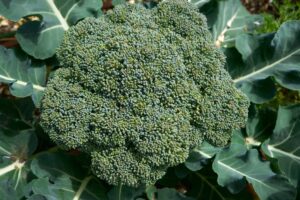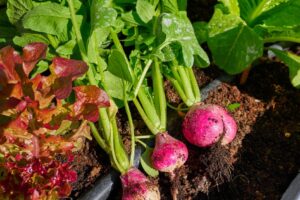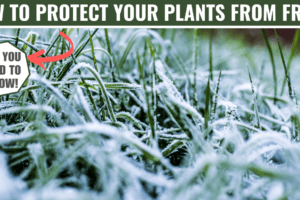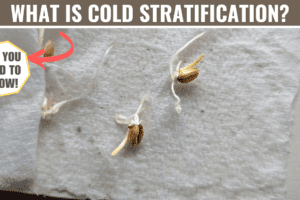Disclaimer: This blog post contains affiliate links. If you make a purchase through these links, I may earn a small commission at no additional cost to you. Learn More. Thank you for supporting our garden community.
Embracing The Beauty: 10 Native Trees with Stunning Fall Foliage
As the autumn breeze sweeps through, it’s the perfect time to celebrate the stunning display of fall foliage. In this blog post, we’ll take a closer look at 10 native trees from the eastern United States and Southeastern Canada that dazzle us with their vibrant natural beauty. Not only do these trees put on a captivating show, but they also play a crucial role in supporting local ecosystems. So, grab your gardening gloves and let’s dive into the colorful world of native species.
Why Plant Native Species?
Native plants have evolved to thrive in the specific conditions of the local ecosystem. They have developed natural resistance to local pests, diseases, and climate, making them hardier and requiring less maintenance. By choosing native species, you’re promoting biodiversity and providing native pollinators and wildlife with the food and overwintering habitat they need to thrive. Native plants also help protect water resources by reducing the need for excessive watering and preventing soil erosion. Plus, they can even help mitigate the effects of climate change by absorbing more carbon dioxide. So, when you plant native species, you’re not just creating a beautiful garden, you’re also supporting the health and balance of your local environment. It’s a win-win for both you and the planet! Check out our list:
Red Maple (Acer rubrum):
Kicking off our list is the native Red Maple, known for its incredible adaptability and breathtaking autumn colors. With leaves that showcase shades of fiery red, orange, and yellow, this tree is a must-have for any garden looking to add a burst of vibrant fall foliage. Plus, by planting native Red Maples, you’re providing valuable food and shelter for local wildlife.
Sugar Maple (Acer saccharum):
The iconic Sugar Maple, native to the eastern United States and Canada. These hardy trees greet fall with a showstopper performance, displaying leaves in hues of fiery orange and red. Not only do they create a stunning landscape, but they also support a wide range of native insects, birds, and other wildlife.
Eastern Redbud (Cercis canadensis):
The Eastern Redbud is a native treasure that adds a unique touch to fall landscapes. Its heart-shaped leaves transform into vibrant shades of yellow and orange, offering a delightful contrast to the surrounding foliage. By planting Eastern Redbuds, you’re providing nectar for bees and habitat for butterflies.
Black Tupelo (Nyssa sylvatica):
Black Tupelo, also known as Black Gum, puts on an autumn show that’s hard to resist. Its glossy green leaves turn vibrant shades of red, orange, and sometimes slightly purple, creating a breathtaking sight. By choosing native Black Tupelo, you’re supporting local birds that rely on its fruits as a crucial food source.
American Beech (Fagus grandifolia):
The majestic American Beech displays a smooth gray bark and stunning yellow leaves in the fall. This native beauty provides food and shelter for a variety of woodland creatures, making it an essential tree for creating biodiversity in your garden.
White Oak (Quercus alba):
The White Oak, a symbol of strength and longevity, blesses us with its beautiful fall foliage. Its leaves turn deep shades of red, brown, and bronze, bringing warmth to the autumn landscape. By planting native White Oaks, you’re supporting countless species, as these trees provide food and shelter for bugs, birds, and mammals.
Eastern Hemlock (Tsuga canadensis):
The Eastern Hemlock is not only an evergreen staple but also offers a stunning backdrop in the fall. With its green needles and small cones, it adds texture to the landscape while other trees deck themselves in vibrant colors. Native Hemlocks are vital habitat providers for several bird species, including many juncos and bluejays.
Eastern Cottonwood (Populus deltoides):
If you’re looking for a tree that boasts large, heart-shaped leaves and gorgeous yellow hues in the fall, the Eastern Cottonwood is your answer. Besides its visual appeal, this native species provides nesting sites for birds and serves as vital habitat for various wildlife.
Tamarack (Larix laricina):
The Tamarack, a deciduous conifer (what!) native to the region, offers a unique autumn experience. Its bright green needles transform into a golden-yellow spectacle before they drop. By adding Tamaracks to your garden, you’re supporting biodiversity and providing nesting opportunities for birds.
American Mountain Ash (Sorbus americana):
Last but not least, the native Mountain Ash delivers a show-stopping performance with its clusters of bright orange or red berries against colorful foliage. Birds feast on these berries, spreading the tree’s seeds and contributing to forest regeneration.
Conclusion
Autumn in the eastern United States and Southeastern Canada offers a vibrant display of fall foliage, and what better way to celebrate than by embracing native trees? By planting these native beauties, you’re not only adding striking colors to your garden but also supporting local ecosystems and wildlife. So, go ahead and choose native species like the Red Maple, Sugar Maple, and Eastern Redbud, among others, to create a sustainable and stunning autumn landscape. Let’s cherish our native treasures and create gardens that nurture the beauty of our environment. Happy gardening, and enjoy the breathtaking beauty of native fall foliage!
Disclaimer: This blog post contains affiliate links. If you make a purchase through these links, we may earn a small commission at no additional cost to you. Learn More. Thank you for supporting our garden community.







Leave a Reply